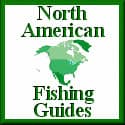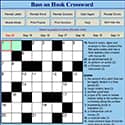Bass on Hook is Supported by our readers. As an Amazon Associate We earn commissions from qualifying purchases. For more informtion read our Amazon Affiliate Disclosure and Affiliate Disclosure Policies.
Hook Placement
By Leo Watson
I know what you are thinking, how hard can it be to rig a hook in the bait properly?
That in itself is a completely different subject.
That is not what I'll be talking about in this article.
I will also not be talking about the hooks or sizes required in this article so if you need that information see this article by my good friend Tom Lester.
When I talk about hook placement within this article, it will be about the placement of where the bass is hooked and what it can tell you.
Actually the idea for this article was conceived while at a personal appearance earlier in the year.
During this event I was fielding questions from various anglers as they stopped by.
With a good sized group of anglers gathering around and asking questions, one gentleman comes up to me and says,"what makes you better than me?"
The group of anglers just got quiet and looked at me with amazement.
This question could be taken a couple of ways.
I informed this gentleman, who obviously must not have known me prior to that moment that I never nor will I ever claim to be better than anyone.
He went on to ask me if I thought he could compete with the Pro's on the water.
My answer was yes, anyone can compete with us and some times even beat us on the water!
It does happen occasionally.
He kind of just laughed it off.
I said to him, let me ask you a question.
I simply asked him, "when you catch a fish where is it hooked?"
His reply was in the mouth.
When I wanted to know exactly where in the mouth, he said it varies.
My next question to him was, "what does that tell you?"
His response was, "I don't know, should it tell me something?"
When I told him yes it should, I now had his attention as well as those anglers who had gathered around.
I now made him stop and think about something that had never crossed his mind or for that matter probably most of the crowds minds before.
This incident is what brought me the idea for this article.
Hook Placement Is Often Overlooked
In my previous articles I have talked about putting the pieces of the puzzle together to pattern these creatures that we pursue.
Hook placement is just another often overlooked piece of that puzzle.
As we talk further I will try to help you understand what hook placement can tell you.
When I have everything right, my ideal spot for hooking a bass would be in the bony part of his upper mouth.
I want to see bait completely inside the mouth and out of site.
This tells me that my lure selection, color, retrieve, etc., are right on the money.
Until I achieve this goal the process of elimination continues.
Hook position plays a vital role in the refinement of my pattern.
It is one aspect of figuring out the pattern and often the pattern within the pattern.
Most people overlook or have yet to realize that hook placement is a very valuable tool in figuring out bass as well as any other fish for that matter.
If you're not hooking the fish where you want to then the light bulb in your head should come on.
When I stated earlier about my ideal hook placement, it was said for a reason.
When the bass is hooked in that bony area of his mouth it is less likely to throw the hook.
It's when they are hooked elsewhere that could lead to lost fish.
A bass hooked in the side of the mouth scares me to death!
As the bass shakes his head side to side, especially with heavier baits (crank baits, spinner baits, spoons, etc. ) it tears the membrane & creates a hole in the side of its mouth.
This leads to lost fish from thrown hooks.
The same holds true but not to as great of an extent with fish hooked in the lower jaw.
To start with, in my own opinion if you are catching fish outside of the mouth like we all have, this is most likely a reflex strike or predatory strike.
This can be due to competition by other bass for available forage or by one protecting their territory or guarding a nest.
Most of these are hooked while the bass either swats at or hits the bait while protecting their area.
This action is not caused by hunger or for the need to forage.
With each fish caught always pay close attention to its hook location.
If you catch another bass and it is hooked in the same manner it will tell you that your close to being correct but not quite there yet.
This is where trial and error comes into play.
When I say you're close, what I really mean is that you are close enough to catch a few bass, but you are not yet completely dialed in.
Most of the time a minor change is all that is needed to change the hook location within the mouth which will result in fewer lost bass.
Hook Placement Changes For Success
Usually the first minor change I will make is in my retrieve.
This could include my speed, cadence, stop and go, etc.
These suggestions are only limited to your imagination.
If your bites do not increase or your hook position does not change then move on.
This would lead me to believe that retrieve would be ruled out.
My next recommendation would be color.
This could be done with either a minor or major change.
Sometimes a subtle change makes a big difference.
An example of a minor change would be for soft plastics just a change in flake color with the same color body.
For a hard bait like a rattle trap would be to go from silver/black to silver/blue.
I can attest to this personally.
I have fished with a person throwing silver/black without having had a bite all day, while I caught multiple limits that day on silver/blue.
In the course of the entire day this individual never caught on to this subtle difference.
This goes to prove that if the little things are overlooked it can cause you to lose a load of fish and sometimes a lot of money!
Next in line would be your presentation rate or with soft plastic lures your fall rate.
Your fall rate is controlled by the amount of weight added to your soft plastic baits.
As little as 1⁄16 of an ounce can make a big difference.
As a rule of thumb I use just enough weight so that I can keep in touch with or feel my bait on the bottom.
For your presentation rate or speed a variance in your retrieve can also add to your hook up percentage and your hook position.
Keep in mind how you caught your last bass and see if a deviation in speed or cadence of your retrieve adds to the proper hook position.
Summing Up Hook Placement
The above information will definitely help you in your future outings.
Take this information and use it to your advantage whenever you are on the water and for whatever species you are pursuing.
As I stated before, this is just one more piece of the puzzle that will work in your favor.
If you have any questions or comments as always, you can submit them through this website to me.
I look forward to hearing from you.
Good luck,
Leo Watson
Pro Staff
Look for other articles written by Leo Watson in Leo's Pro Staff Angler Profile










